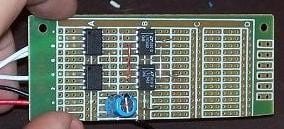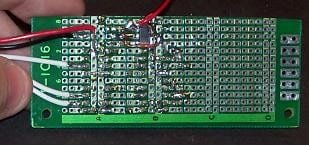Ricky_nz
10 kW
Hi David,CNCAddict said:WOW, this is really fantastic and fast progress!!! I've personally been waiting for almost a decade for a good "torque control" motor drive and it looks like you're headed in that direction with the 2 phase current sensors.
What do you plan to use as a programming interface; a serial connection with attached PC software? I'm also curious if you are going to open source the software as well as the hardware? Anyhow, I'm in for a few drives myself if everything pans out as planned. FYI there is another gent working on something very similar at scolton.blogspot.com. He has working FOC and about a million pages of info on his blog.
David B.
http://www.xeramotors.com
The programming interface will primarily be USB but the serial port can do most things that USB will be able to do only slower.
Parameters will also be able to be set over the CAN bus.
Currently only the serial port is active. Too much to do so haven't got round to setting up the USB but it shouldn't be too hard when I get round to it.
I have had USB working on an earlier LPC chip so know whats involved.
My configuration app is written in QT and uses libusb so when I get enough working It shouldn't be too hard to get a windows build working.
Most of my development is done in linux
For the software I will probably keep my sensor-less vector control software closed source but may provide a basic framework as open source for those who want to write their own control code. I will think about that a bit more but currently thats the plan at the moment.
I just came in from making a motor mount so I can try and spin up my motor later today.
Just waiting for the paint to dry (won't take long today since its hot although maybe a little humid. I used water based quick dry undercoat).
I didn't really need to paint it but it just covers up the reused wood, I made it out of an old chopped up bathroom cabinet :lol: ).
I have made more progress and now have 3 PWM outputs that look like they are probably at the correct correct on the scope looking at the PWM but I can't tell quickly until I have the motor connected later today although between two or them I connected the inductor and its looking good
Its more complicated because I have just added the code to inject a zero sequence waveform onto all 3 phases to all more output volts from the fixed DC bus voltage.
Hopefully I will have more good news in a couple of hours.
Ricky





